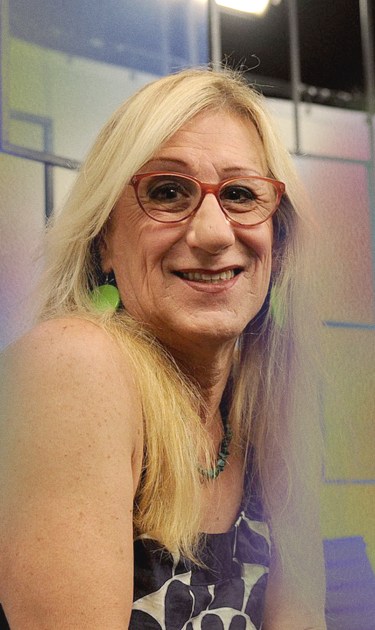It was during a family barbecue that an uncle mentioned a family friend whose child had just started to transition. I braced myself for impact, used to where these conversations went, as my mom commented, “She was always a little masculine, wasn’t she?” There you had it. Without thinking, I corrected her. “Mom, it’s him.” What followed is what you always hear from those opposed to anything outside the binary or LGBTQ+: there are too many letters in the acronym, too many new terms, or the excuse that before people were just gay or lesbian but still a man and a woman.
It’s in moments like these that I asked myself: now what? To clarify, I’m not transgender myself. But as a member of the LGBTQ+ community and an ally of transgender people within my home of Brazil, I had to push back and find a way to explain our infinite complexities to a different generation while dreading it at the same time. And it wasn’t like this was the first time I had a discussion with family about queer things, but they’d always missed the mark because there was no shared language.
Then, her name popped into my brain and I asked, “Do you remember Laerte Coutinho, the cartoonist?” At that moment, especially with the way their eyes lit up, I knew I had reached them on a level I never had before. “Of course, I know who she is!” said my mom, almost offended I had asked. I used the opportunity to ask her and my uncle one simple question: why is it easy to call Laerte “she” but a problem for the person transitioning now? And I was met with more classic pushback that framed Laerte’s transition as something that came with age instead of an innate understanding of oneself, especially now during a shifting worldview that acknowledges trans identities.
I admit my instinct was to enter into combat mode at this pushback. But I took a deep breath, held onto the connection I’d found, and remembered something Laerte herself said: context matters. So I started bridge that gap between us.

Cartoonist Laerte Coutinho began her career in the 1970s during a time when many didn’t have the language or resources to educate themselves on the transgender community. A talented cartoonist, she co-created the zine O Balão and contributed to others such as O Pasquim. Both were spaces for counterculture and satire about the dictatorship that ruled Brazil at the time. And according to Laerte, she had always been an activist, but most of her work was about things outside of herself. It was only in 2005, after the tragic death of one of her sons, Diogo, that she realized she no longer could keep who she was hidden from herself or the world. And in 2010 she publicly came out as a transgender woman.
Admittedly, Laerte suppressed questions about her gender or sexuality until later on in life while using the language of homophobia as a way of disassociating herself from other LGBTQ+ people. But without a clear understanding of what she was experiencing within and the staggering hate crimes against LGBTQ+ within Brazil, one can understand why she ignored those parts of herself and survived. In the 2017 documentary Laerte-se, directed by Lygia Barbosa and Eliane Brum, Laerte reflected on how in her teens, her “desire for men was so shocking, I wished to become a woman. I believe this was a way of approaching being transgender in my adolescence.”
In the same documentary, the cartoonist goes on to explain that it was through her art that she was able to come to terms with herself. The first time she broached the topic of being trans publicly, was through a comic strip, where one of her characters, Hugo, crossdresses. Laerte said that, after the piece came out, a friend called and asked if she had ever thought about the possibility of her being trans. And it was through community and self-discovery that Hugo came out to the world as Muriel; a character that would go on to question gender norms, the discourse about trans people using the public bathroom, and many other topics relevant to trans issues.

I used Laerte, her example, and her experiences to cross the bridge between me and my family when it came to trans rights, the hate and vitriol against them, or just using proper pronouns for someone transitioning. Laerte was that shared language. And I could tell they understood me, maybe for the first time, from the way that my mom went quiet and how my uncle shifted away from why this family friend’s kid had to use “he” pronouns to “Well, I guess he at least chose a good new name.” And that was it as my mom and uncle then proceeded to lose themselves in a conversation about the merits of a shorter or longer name when it came to his name.
It’s not like this conversation was a miracle worker that shifted their perspective on the LGBTQ+ community as a whole. I’d probably have to keep having similar discussions because of how nuanced our community is. But unlike any other conversation I had before, this time actual dialogue and a connection was made. All because, instead of trying to bring people into my world or staying within my own limits, I took a step into theirs and found a shared language. One where topics like pronouns didn’t seem like a foreign concept but part of the lives of actual people they had known for decades. And it all started with Brazilian cartoonist Laerte Coutinho.
This post is part of Remezcla Pride 2023: The Joy Edition. Read more posts like this here.





